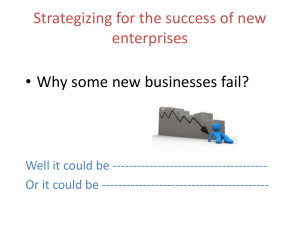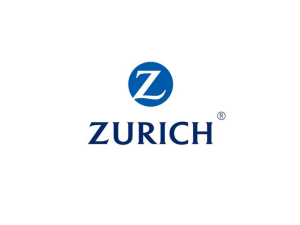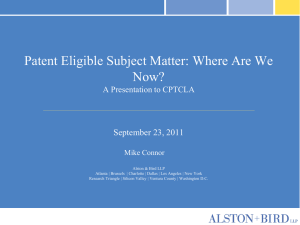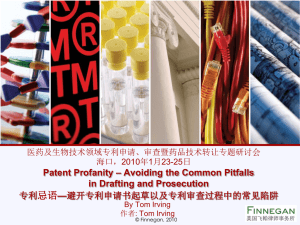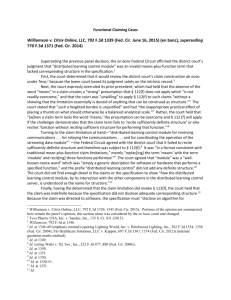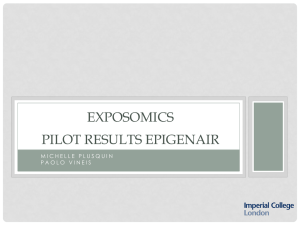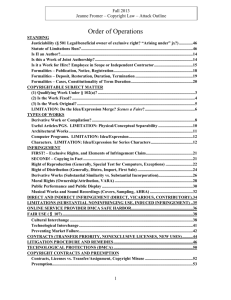Joint Ownership Patents & Technology
advertisement
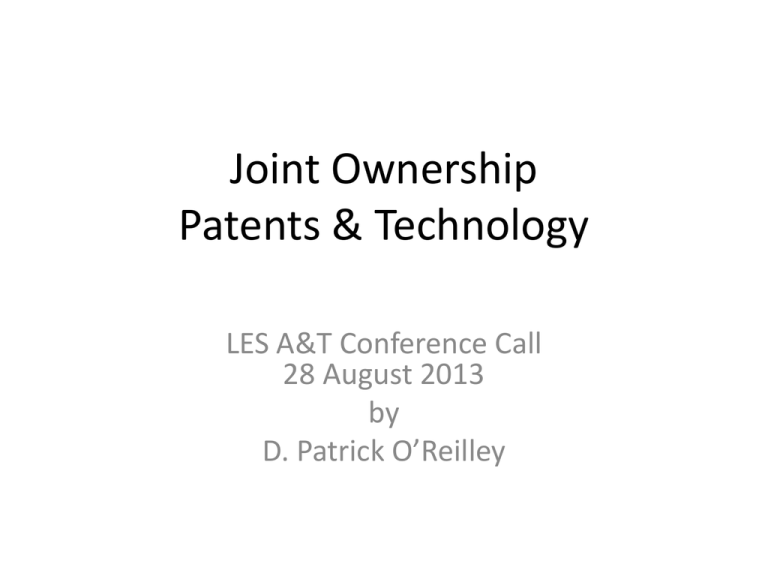
Joint Ownership Patents & Technology LES A&T Conference Call 28 August 2013 by D. Patrick O’Reilley Rights of Joint Owners of Patents • United States – Absent contract provision, each joint owner may exploit or license the patent without accounting to other joint owners (35 U.S.C. §262) • May grant immunity from suit by other owner – Schering v. Roussel, 104 F.3d 341 (Fed. Cir. 1997) • Need not share license royalties – May not Grant Exclusive License • Although may grant exclusive as to owner’s interest – No standing to sue for infringement without willing cooperation of all joint owners • All owners indispensable for suit – Lucent Techs., Inc. v. Gateway, Inc., 543 F.3d 710 (Fed. Cir. 2008) – Israel Bio-Eng’g Project v. Amgen, Inc., 475 F.3d 1256 (Fed. Cir. 2007) • May not compel joinder of other owners – Ethicon v. U.S. Surgical, 135 F.3d 1456 (Fed. Cir. 1997) – But see dissent re Rule 19 • Except by contract 2 Rights of Joint Owners of Patents • Outside United States – Varies • Right to exploit with obligation to share with other owners • No right to exploit without permission of other owners • Right to assign without permission but no right to license – See Article 73(3) of the Japanese Patent Law; Section 36(3) Patents Act 1977 (UK); Section 16(2) Patents Act 1990 (Australia); Forget v. Specialty Tools of Canada, Inc., (1995) 62 CPR (3d) 537 (Canada); Chinese Patent Act, Article 15 (2009). – Contractual permission to exploit without accounting necessary for worldwide joint ownership Joint Ownership of Technology • Rights in unpatented technology arise from possession, use in business and relative secrecy – not ownership – Another may possess and use same technology – if lawfully acquired and relatively secret, two possessors but they are not joint owners • Rights against third parties arise from theft, misappropriation or confidential relationship – Theft from one possessor gives cause of action to that possessor but no cause to other possessor • Transfer of technology from possessor to licensed possessor creates two possessors – not joint owners – Relative secrecy contractually imposed – If exclusive license, licensor possessor must refrain from use or disclosure Arrangements That May Result in Joint Ownership • Any agreement where parties work together – Joint R&D – Collaboration – Consulting – Co-development – Contract manufacturing – Supply – Employment • When hiring an inventor Allocation of Ownership • Agreements need to allocate ownership Traditional -- allocation by employment of inventors or creators/discoverers • Under what law is inventorship determined ( usually US) • Inherently provides for joint ownership but not inevitable • Conceived or reduced to practice during performance – – Employee 1 conceives before agreement and employee 2 reduces to practice during agreement – jointly owned even though employee 1 did nothing under agreement See Lucent Technologies, Inc. v. Gateway, Inc. 543 F.3d 710 (Fed. Cir. 2008); Israel Bio-Eng’g Project v. Amgen, Inc., 475 F.3d 1256 (Fed. Cir. 2007) • Unpatentable technology is created or discovered – When do you know it is unpatentable? Allocation for inventions and technology should be the same since invention may later become mere technology or vice versa – May allocate ownership to one party with license back to other party • Used to anticipate work by one will be prior art to another – Avoids required public disclosure of agreement and terminal disclaimed under 35 USC 103(c)(2) • License back can be exclusive in defined field – standing to enforce issue • Also could assign all to separate entity (holding company) - complicated – May allocate by field of interest • Requires defined fields and must allow for overlap or outside both – May allocate some but often results in joint ownership – Unpatented technology allocated by possession and right to use 6 • Allocation may be by application or field • Right to use may be restricted by contract • Both parties must hold in confidence for benefit of other party Consequences of Joint Ownership • Agreement must address consequences of joint ownership – Control & cost share in prosecution of patents • Control of claims controls inventorship & ownership – Absent contractually required cooperation, neither owner may enforce • “Cooperation” means join in action brought by one owner for past infringement. Does not preclude one owner granting license – Schering v. Roussel, 104 F.3d 341 (Fed. Cir. 1997) – May need to deal with freedom to license • If competitors require mutual approval, antitrust potential • Also, difficult to agree when inventions unkown • Anticipate jointly-owned foreign patents – Each owner expressly grants the other owners the right to exploit without accounting


